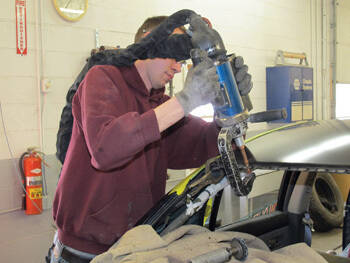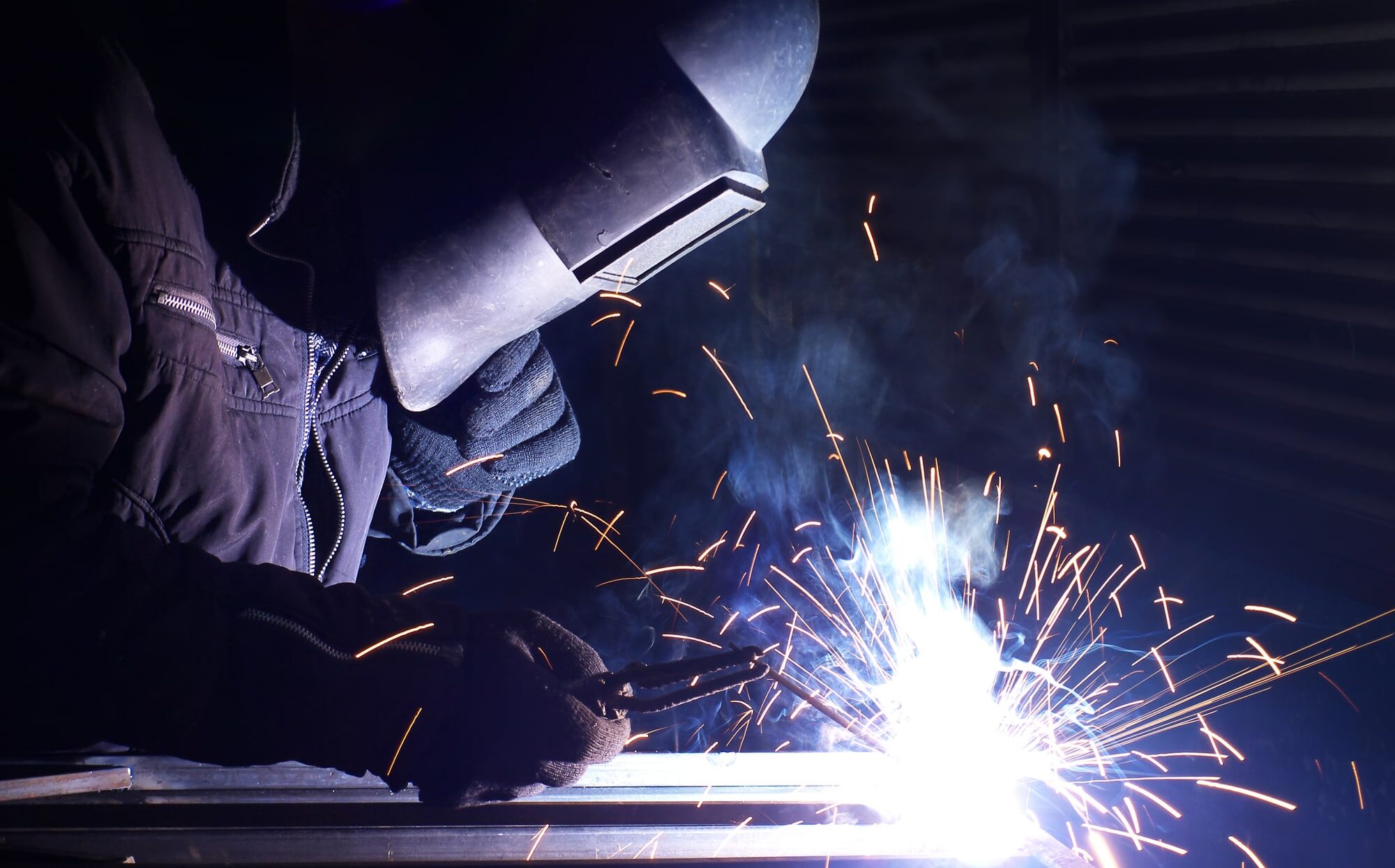Everything about Welding: Key Insights Into Techniques and Best Practices for Success
Welding incorporates a range of strategies, each matched for details products and applications. Understanding these approaches, such as GMAW, SMAW, and TIG, is essential for accomplishing suitable results. The appropriate equipment and security techniques can not be neglected. As preparation and repairing play crucial duties in the welding procedure, grasping these components can substantially enhance the top quality of the end product. What are the vital factors that ensure an effective weld?
Recognizing Various Welding Strategies
Welding techniques encompass a selection of approaches, each suited to details applications and products. Among the most common strategies are Gas Steel Arc Welding (GMAW), Shielded Steel Arc Welding (SMAW), and Tungsten Inert Gas Welding (TIG) GMAW, additionally referred to as MIG welding, is popular for its speed and flexibility, making it ideal for thin products. SMAW, or stick welding, is favored for its simpleness and effectiveness in exterior environments, particularly with thicker metals. TIG welding uses accuracy and control, making it suitable for elaborate work and non-ferrous steels (Belgrade Welding). Each technique has its distinct advantages and factors to consider, allowing welders to select the most effective method based upon the project's demands, product type, and wanted end results. Comprehending these techniques is essential for successful welding
Essential Welding Tools and Tools
While numerous welding techniques require particular skills, the ideal tools and tools are similarly essential for attaining top quality outcomes. Vital welding devices includes welding makers, which differ depending upon the technique-- such as MIG, TIG, or stick welding. Protective gear, including gloves, safety helmets, and aprons, assurances safety and convenience throughout the procedure. On top of that, components and clamps help protect materials in place, making certain precision in welds. Consumables like welding poles, wire, and shielding gas are additionally crucial parts that influence the high quality of the weld. Moreover, tools such as cutters and grinders help with surface area prep work and post-weld ending up, adding to a professional end result. Purchasing high-quality devices inevitably boosts the performance and effectiveness of welding jobs.
Safety And Security Practices in Welding
Correct safety and security techniques are crucial in the welding industry to shield workers from prospective hazards. Welders have to put on proper personal safety tools (PPE), consisting of safety helmets with proper shading, handwear covers, and flame-resistant clothes. Ample air flow is important to decrease direct exposure to harmful fumes and gases produced throughout the welding process. Additionally, employees ought to be learnt the proper handling of welding devices to avoid accidents. Fire security procedures, such as keeping combustible materials away from the welding location and having fire extinguishers conveniently available, are needed. Regular examinations of devices and work areas can assist determine potential risks prior to they lead to mishaps. By sticking to these safety and security practices, welders can develop a more secure working atmosphere and lessen dangers connected with their trade.
Preparing Products for Welding
Preparing materials for welding is an important step that considerably influences the high quality and stability of the end product (Montana Mobile Welding and Repair). Appropriate prep work entails cleaning up the surface areas to get rid of impurities such as oil, dust, and rust, which can jeopardize the weld. Techniques such as grinding, sanding, or using solvents are generally used to achieve a tidy surface area. Furthermore, making sure that the products mesh comfortably is crucial; spaces can result in weak welds. It's additionally vital to think about the placement and positioning of the elements, as this will certainly influence the ease of welding and the final result. Selecting the proper filler material and making certain compatibility with the base metals is crucial for attaining solid, long lasting welds.
Tips for Achieving High-Quality Welds
Accomplishing high-quality welds calls for focus to detail and adherence to best techniques throughout the welding procedure. Appropriate joint preparation is important, ensuring surfaces are clean and free from pollutants. Picking the ideal filler product and welding technique based on the base steels is critical for perfect bonding. Maintaining regular traveling rate and angle while welding can avoid defects and advertise harmony. In addition, managing warm input is important; excessive warm can cause warping and deteriorated joints. If necessary, on a regular basis evaluating the welds during the procedure enables for instant changes. Utilizing suitable post-weld therapies, such as cleansing and stress and anxiety relief, can improve the durability and integrity of the weld, inevitably making certain an effective result.
Troubleshooting Usual Welding Issues
Welding often presents difficulties that can impact the top quality and integrity of the last product. Usual problems such as porosity, irregular weld beads, and getting too hot can emerge, each needing certain repairing techniques. Understanding these problems is important for welders to improve their abilities and accomplish perfect outcomes.
Porosity Troubles Discussed
Although porosity can frequently be ignored, it stays a critical problem in welding that can jeopardize the integrity of an ended up item. Porosity describes the visibility of tiny gas pockets within the weld grain, which can weaken the joint Read More Here and lead to premature failing. This issue commonly occurs from pollutants, moisture, or incorrect securing gas coverage throughout the welding process. To alleviate porosity, welders should validate that the base website link materials are completely dry and clean, utilize appropriate shielding gases, and maintain consistent welding parameters. Routinely inspecting the devices and environment can additionally help determine prospective concerns prior to they manifest in the weld. Addressing porosity effectively is crucial for achieving solid, long lasting welds that meet high quality standards.

Irregular Weld Beads
Irregular weld beads can significantly affect the quality and strength of a finished item. Numerous factors add to this issue, consisting of inappropriate travel speed, wrong amperage setups, and inconsistent electrode angles. When the welder relocates as well promptly, a bead may show up slim and do not have infiltration, while moving too slowly can cause extreme buildup. Additionally, utilizing the incorrect amperage can cause either undercutting or too much spatter, both of which compromise weld honesty. The welder's method, such as irregular torch movement, can also bring about irregular bead look. To reduce these troubles, welders should concentrate on keeping constant, controlled motions and guaranteeing appropriate tools setups to achieve harmony in their welds. Uniformity is crucial to attaining strong and trustworthy welds.
Getting Too Hot and Warping Issues
Extreme warmth during the welding procedure can bring about considerable overheating and contorting concerns, influencing the structural stability of the workpiece. These issues typically materialize as distortion, which can jeopardize alignment and fit-up, making more assembly testing. Factors adding to overheating consist of the selection of welding criteria, such as voltage and travel rate, as well as mig pliers the type of product being welded. To alleviate these concerns, welders should maintain constant traveling rate and ideal warmth input while keeping track of the work surface temperature level. Furthermore, preheating or post-weld heat therapy can assist reduce stress and anxieties triggered by rapid air conditioning - Montana Mobile Welding and Repair Fabrication. Routine evaluation and adherence to finest techniques are necessary in avoiding getting too hot and guaranteeing the long life and dependability of bonded frameworks
Frequently Asked Questions
What Are the Profession Opportunities in the Welding Industry?
The welding industry offers diverse profession possibilities, including placements as welders, engineers, assessors, and teachers. Professionals can work in manufacturing, building, aerospace, and automobile sectors, benefiting from strong demand and affordable incomes in numerous functions.
How Can I Improve My Welding Rate Without Giving Up Quality?
To enhance welding speed without compromising top quality, one need to exercise effective methods, preserve devices, maximize setups, and improve hand-eye sychronisation. Normal training and seeking responses can likewise significantly add to accomplishing faster, top notch welds.
What Accreditations Are Offered for Welders?
Countless certifications exist for welders, consisting of those from the American Welding Culture (AWS), the National Center for Building Education and Research (NCCER), and different industry-specific organizations. These credentials boost employability and show skill efficiency.
How Does Welding Affect the Properties of Metals?
Welding influences the residential properties of steels by altering their microstructure, which can bring about adjustments in firmness, ductility, and stamina. Warm input and cooling prices during the process substantially influence these material attributes.
Can I Bonded Dissimilar Metals With Each Other?

Comments on “Steps to success for poor fusion from Montana Mobile Welding and Repair”